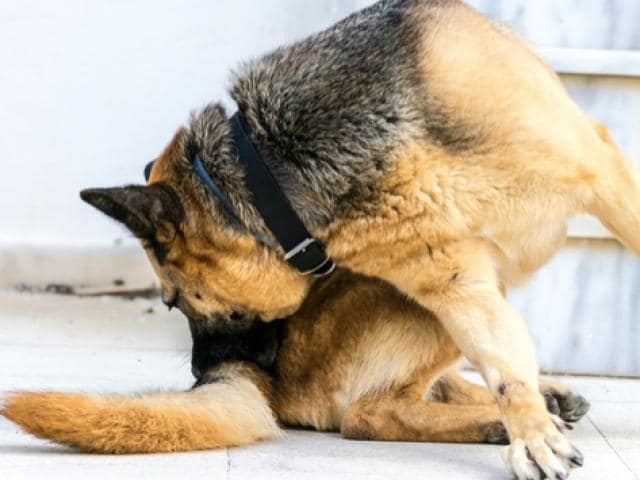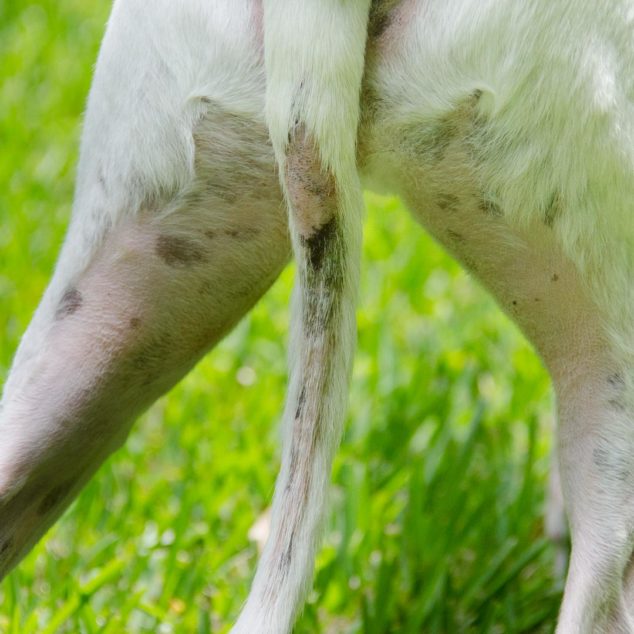Dog Loss Hair On Tail - There's nothing more concerning to a dog owner than to see their beloved furry friend suffer from hair loss on their tail. A tail is like a natural accessory that makes your dog look even cuter. But the moment you notice that your dog's tail is losing hair, it can be a cause for alarm. It's essential to figure out the root cause of the hair loss and what you can do to help your furry pal. In this article, we'll discuss the different reasons why dogs lose hair on their tail, and what you can do about it.
Why Dogs Lose Hair on Their Tail
Dogs can lose hair on their tail due to various reasons. Some of these reasons include:
1. Parasites or Infections
Parasites such as fleas, mites, and ticks are common culprits for hair loss on dogs' tails. These parasites feed on your dog's blood and can lead to a lot of itching and irritation. The more your dog scratches, the more hair will fall out. Bacterial or fungal infections can also occur on your dog's tail, leading to hair loss.

2. Allergies
Allergies can cause your dog's skin to become inflamed, itchy, red, and irritated. This irritation can lead to excessive scratching and biting, causing hair loss. Common allergies in dogs include flea bites, food allergies, and environmental allergies.
3. Hypothyroidism
Dogs with hypothyroidism have an underactive thyroid gland, which leads to a decrease in the production of thyroid hormones. These hormones play a crucial role in regulating metabolism in the body, and when there's a deficiency, it can cause hair loss on the tail, among other symptoms.

4. Anal Gland Issues
Dogs have two small anal glands located on either side of their anus. These glands can sometimes become clogged or infected, leading to discomfort and itching. When this happens, dogs will scoot their butt on the floor or bite at their tails, leading to hair loss.

5. Stress or Anxiety
Just like humans, dogs can experience stress and anxiety that can cause hair loss. Common triggers include separation anxiety, thunderstorms, car rides, or any change in routine or environment. When a dog experiences stress or anxiety, they may lick or chew at their tail excessively, leading to hair loss.
How to Help Your Dog with Hair Loss on Their Tail
If you notice that your dog is losing hair on their tail, it's crucial to identify the root cause and take action. Here are some tips to help your furry friend:
1. Visit Your Vet
The first step is to schedule an appointment with your vet to identify the cause of the hair loss. Your vet may perform a skin scraping or other tests to determine if parasites or an infection are the culprit. Depending on the underlying cause, your vet may prescribe medication or recommend a change in diet or lifestyle.
2. Keep Your Dog Clean and Groomed
Keeping your dog clean and groomed can help alleviate discomfort and irritation. Regular bathing and brushing can help remove any dirt, debris, or excess hair that may be contributing to hair loss.
3. Address Parasites
If fleas, mites, or ticks are the cause of your dog's hair loss, it's essential to address the parasites. Your vet may recommend medication, collars or spot-on treatments, or other preventative measures to keep these pesky parasites at bay.
4. Improve Your Dog's Diet
Your dog's diet plays a crucial role in their overall health and wellbeing. Make sure your dog is getting adequate nutrition and is eating a high-quality diet. Consider adding a supplement or switching to a different food if your vet recommends it.
5. Manage Stress and Anxiety
If your dog's hair loss is due to stress or anxiety, there are several things you can do to help. Creating a predictable routine, providing plenty of exercise and mental stimulation, and using calming aids such as pheromone sprays or anxiety jackets can all help alleviate stress and anxiety.
With these tips and ideas, you can help your furry friend with hair loss on their tail. Always remember to be patient and consistent in your efforts, and consult with your vet if you have any concerns or questions.
Find more articles about Dog Loss Hair On Tail